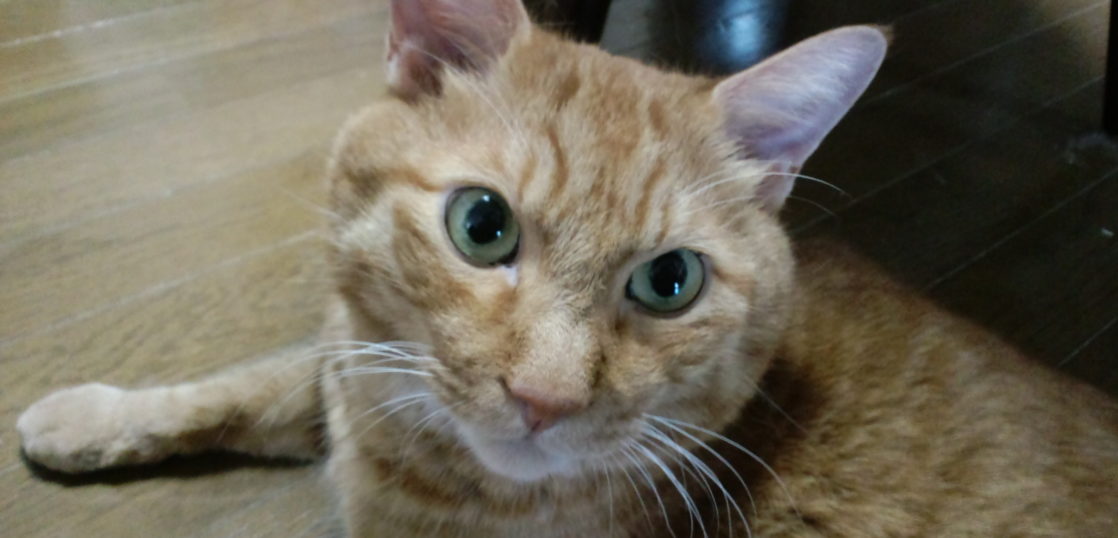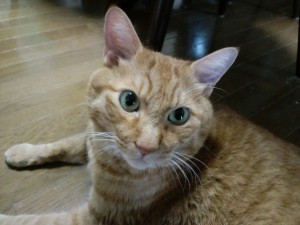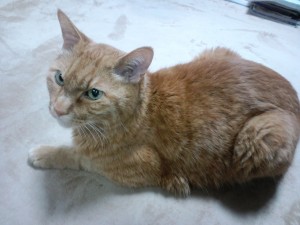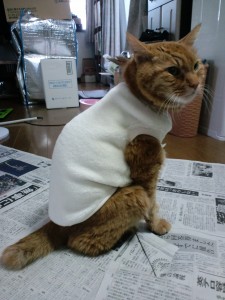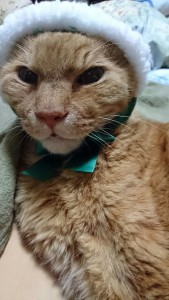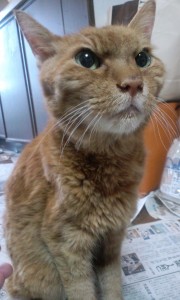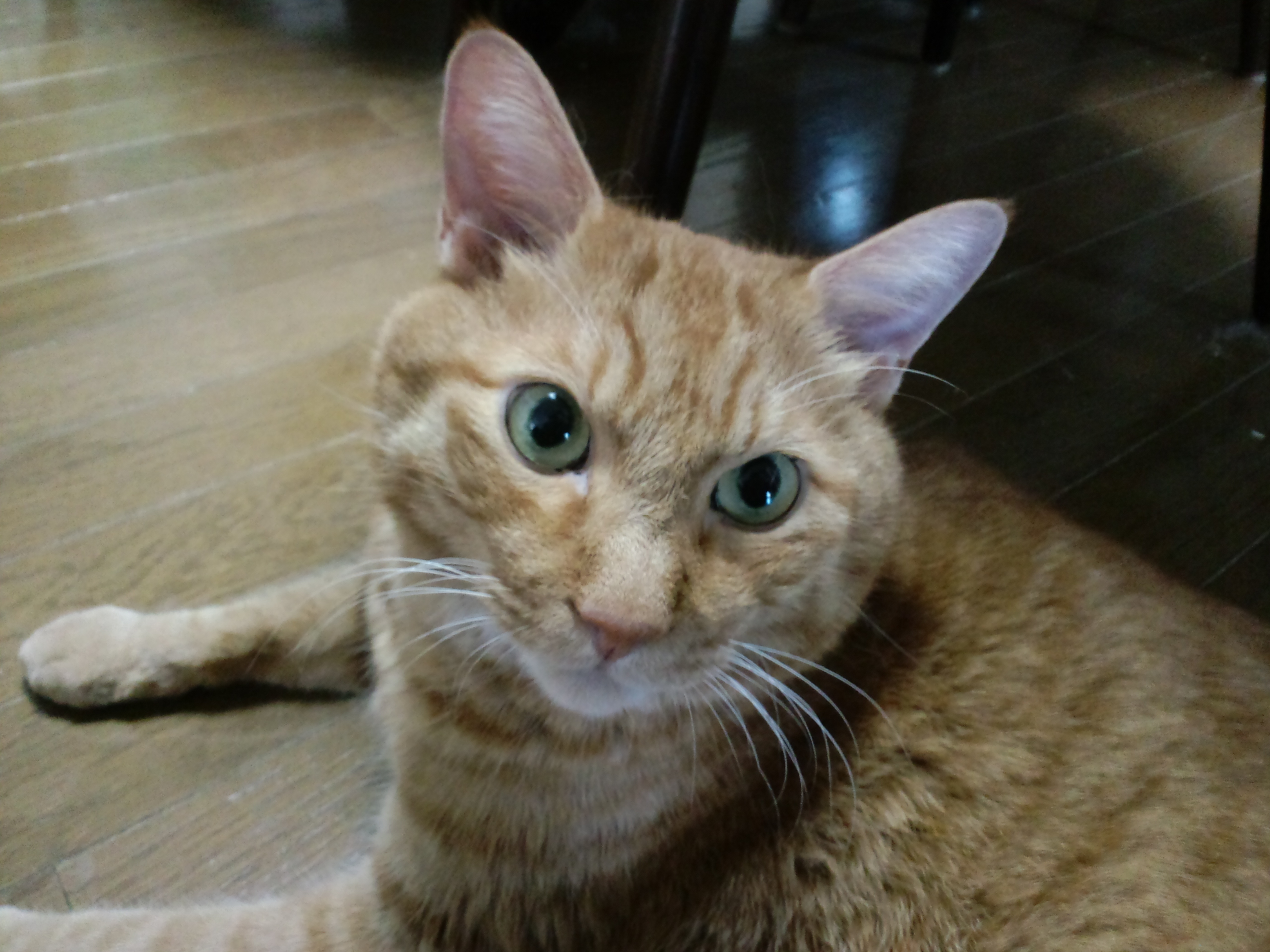目次
Case of Using Cordy for a Cat Suspected of Having Lymphoma
|
We received an email consultation asking whether the cat’s diagnosis was definitively lymphoma and for advice on diet and other matters.
Advice from Our Company
・There is insufficient information to definitively confirm lymphoma. Steroid treatment is used for both lymphoma and inflammatory bowel disease (IBD), making it difficult to confirm the diagnosis.
・Firstly, it is important to restore the immune system to enhance the body’s natural healing power.
・It is recommended to conduct regular imaging tests, such as ultrasound, for the suspicious areas in the intestines.
・A low-carbohydrate, high-protein diet is recommended.
There were concerns about kidney failure.
For cats with kidney failure, protein restriction is important. However, extreme protein restriction can lead to muscle self-digestion to compensate for energy deficiency, which can weaken the body further.
If there are no symptoms of kidney failure, ensure proper protein intake to build muscle, increase metabolism, and aim for a body that can withstand illness.
- Nutrition Therapy for Cancer in Dogs and Cats – Fundamentals of High Protein, Low Carbohydrate
- New Dietary Ideas to Fight Cancer (Dogs and Cats)
- Actively Taking Vitamins for Cancer Countermeasures in Dogs and Cats
- About Low-Protein Diets for Cats with Kidney Disease
- BCAA Supplements for Dogs and Cats with Decreased Stamina, Liver, or Kidney Issues
- Healthy Gut! – Recommendations for Enhancing Immunity through Gut Activity
Current Status
Cats tend to be more sensitive to taste compared to dogs, and some people find it challenging to give them Cordy. However, this particular cat fortunately eats very well when Cordy is mixed into its food.
The cat’s diet has been changed from previous dry food to raw meat, raw fish, vegetables, and canned food.
The cat experienced increased appetite due to steroids, which sometimes led to overeating and vomiting, and there were also instances of chronic diarrhea due to overeating. However, these issues have now settled down.
Since around September 2015, when the chronic diarrhea began, there were observations of an abnormal craving for fatty foods.
It is often said that “a transformed cat licks the oil of the lantern,” which indicates that cats generally love oil. However, such symptoms can occur when there is a deficiency of Vitamin A or Vitamin D.
It is believed that this craving occurred due to excessive excretion of vitamins caused by diarrhea.
After switching the diet to canned food, raw fish, and raw vegetables, these symptoms have subsided. The cat’s body, which had become emaciated, has returned to a healthier state, and its coat has become shinier.
The cat celebrated its 14th birthday at the end of February 2016. Although there was an increase in vomiting during the tapering off of steroids, the symptoms are now under control with adjusted steroid dosages. At present, there are no lumps suggestive of tumors upon physical examination, no diarrhea or vomiting, and the weight, which had dropped to 4.1 kg, has increased back to 5 kg.
Though the disease name remains unknown, there have been reports of improvement in previously concerning symptoms, which have brought joy to the owner.
Recent photo of Elena-kun. What a dignified face!
Subsequent Developments
Early April 2016
During the shedding season, the cat vomited hairballs. Although Laxatone was prescribed last year, it caused diarrhea and strained bowel movements from the day after administration, followed by chronic diarrhea and nausea. Additionally, there were concerns about the petroleum-derived ingredients in Laxatone, prompting contact to discuss further measures.
While the petroleum-derived ingredients in Laxatone are not absorbed by the body, excessive intake of the oil content might cause diarrhea. It is less taxing on the body to pass hairballs through stool rather than vomiting them, but given that a cat’s intestines are prone to stretching, there is a potential risk of developing “megacolon” in the future or getting hairballs stuck in the intestines. Therefore, it was decided to monitor the situation with cat grass initially.
Opinions are divided regarding cat grass, but as long as the cat grass does not contain harmful components, it can naturally stimulate the gastrointestinal tract to expel hairballs, which wild cats do by eating grass. This might be a preferable approach to dealing with hairballs. However, it is important to ensure moderation, so the owner was advised to regulate the amount consumed.
The cat’s health is stable, and its weight is well-maintained.
Mid-April
The condition is stable, and the steroids have been tapered to once every three days. Due to a slight deterioration in kidney values observed in a blood test last April, fluid therapy has been continued. Currently, the steroids are also putting some strain on the kidneys, so I advised continuing fluid therapy within a manageable range.
A lump had formed on the neck due to the needle puncture during fluid therapy sessions, but it has shrunk to about half its size after starting Cordy.
**Late April**
Although he was stable for about a week on steroids administered once every three days, there was a single incident of severe vomiting. He calmed down and ate well after that. However, it seemed like his water intake increased since he started vomiting hairballs, so I asked them to monitor his daily water consumption. For cats, drinking more than their body weight (kg) x 100 ml per day is considered excessive thirst.
**Early May**
While occasional hairball vomiting or slight vomiting occurs, he is otherwise very healthy, and his weight has increased to 5.2 kg.
**Mid-May**
His weight has increased to 5.28 kg, but he seems to be straining repeatedly, possibly due to hard stools. The vomit content has also changed, and the frequency has increased. Sometimes, he vomits 7-8 times a day, suggesting the cause is not hairballs.
Vomiting can be associated with kidney failure or IBD-related constipation, so I advised them to get blood tests done at their regular vet.
**Late May**
After an antiemetic injection at the vet, the vomiting calmed down, but it returned a few days later. The vomit often contained cat grass, and once they stopped giving him cat grass, the vomiting subsided.
Blood tests showed no worsening values from January’s results, maintaining the current state. An ultrasound showed that the suspicious area in the intestines from the last scan had disappeared this time. X-rays also did not detect any tumor changes.
As it stands, they are to maintain the steroid regimen at once every three days and observe his condition with food and Cordy. Weight: 5.0 kg.
**Mid-June**
His condition is excellent, and his weight has recovered to 5.28 kg.
Although he noticed the steroid mixed in his food and didn’t take the full dose for a few days, his condition and appetite remained good. The lump on the back of his neck has also completely disappeared.
**Late June**
His condition continues to be good, maintaining a weight of 5.2 kg. He became suspicious of steroids mixed in his food and temporarily lost 100 g of weight.
They were considering homemade medication jelly, but since he showed interest in powdered dried sardines for humans, they sprinkled it on wet food and embedded the steroids, which he ate without issue.
**July**
There were occasional bouts of diarrhea, but his condition remained relatively stable. His weight stayed the same at 5.2 kg.
**August**
Severe diarrhea persisted, but his energy and appetite remained intact. However, he stopped eating raw chicken he used to eat.
There are also signs of suspected cystitis, raising concerns about decreased immunity due to the heat.
The weight slightly decreased to 5.1 kg.
September
Although diarrhea continued, after eating raw chicken sprinkled with bonito powder, there was a report of good stools. It is possible that enzymes and other substances in raw chicken helped regulate the stomach condition, but diarrhea reoccurred a few days later.
When the intake of sashimi and raw chicken was increased, good stools appeared again but then diarrhea recurred a few days later, creating a cycle. Despite little change in diet between periods of good stools and diarrhea, there is concern about potential worsening of IBD (Inflammatory Bowel Disease) or lymphoma. However, it was reported that the pet is still energetic, has no issues with appetite, and has seen a slight increase in weight.
November
Since September, the frequency of vomiting increased slightly, and weight decreased to 4.6 kg. Therefore, steroids were increased to half a tablet per day, and after seeing improvement, the dosage was changed to every other day. Cordy was also given in double the amount.
It seems that IBD or lymphoma started to flare up during the late summer to early autumn, when pets’ immune systems are at their lowest, but by increasing the doses of steroids and Cordy, the pet managed to get through it. The condition is gradually returning to normal, and weight increased to 4.88 kg. Energy and appetite remain stable, and it is reported that the pet is actively asking for food.
December
There were no changes in weight, appetite was strong, and the pet enjoyed KFC fried chicken, their long-time favorite, for Christmas. The steroid dosage was reduced to half a tablet every three days, and although vomiting occurred about once every two days, the stool condition seems to have stabilized.
January 2017
Worry remains about the persistent vomiting.
It was noted that the pet started drinking more water than before, raising concerns about possible progression of kidney failure. However, energy and appetite are reported to be stable.
From late in the month, diarrhea symptoms recurred, and simultaneous with this, vomiting frequency increased slightly, so an increase in steroids is currently being considered.
February 2017
With the combined use of steroids, symptoms are being kept as stable as possible. Steroid use has suppressed the diarrhea.
While the frequency of vomiting hasn’t changed much, there’s no issue with appetite, and the pet safely reached their 15th birthday. Previously, only Cordy had been administered, but from this month, organic germanium has also been added to the treatment regimen.
March
Because the vomiting frequency remained unchanged, Red Bean Cedar supplements were also added.
Although there are some fluctuations in symptoms, it seems that vomiting frequency has slightly decreased. Considering the pet might be affected by the cold, clothing was chosen.
May 2017
Due to significant fluctuations in condition since the end of April, tests were conducted earlier in May, leading to a diagnosis of lymphoma at Stage 5.
In order to address the observed weight loss, we recommended a lactic acid bacteria supplement to improve intestinal health and began its use.
After being diagnosed with lymphoma, there was a temporary period of severe vomiting and a complete loss of energy and appetite. However, the frequency of vomiting has since decreased, and both energy levels and appetite have improved. Occasionally, there is still diarrhea, so we are also using anti-diarrheal medication.
However, we have not yet been able to halt the weight loss, which will be an ongoing challenge.
June 2017
There has been no change in the frequency of vomiting, and there are no problems with appetite. Stool condition is very good.
However, the weight loss has progressed; in early June, the weight was 3.45kg, but by the end of June, it had decreased to 3.15kg.
We have added BCAA, which allows for direct intake of amino acids, and taurine, an essential amino acid for cats.
The steroid dosage has been increased to one tablet per day.
Due to the rainy season, overall circulation can be easily disrupted, so we requested acupoint stimulation and massage, which, although it seemed puzzling, appeared to be quite enjoyable and relaxing.
Currently, a calm lifestyle is possible, but we aim to at least slow down the weight loss.
August 2017
The weight has further decreased to 2.5kg. The steroid dose remains unchanged at one tablet per day.
Despite this, appetite is strong, energy levels are satisfactory, and there is the ability to go to the bathroom independently.
In early July, there was vomiting every two days, but the frequency gradually decreased, and there were weeks in August with no vomiting at all.
Subcutaneous fluids have been started at home, which is thought to help in preventing dehydration.
September and October 2017
Although there was a slight increase in vomiting in early September, by increasing the frequency of fluid administration and the dosage of Cordyceps, the frequency of vomiting decreased by late September, maintaining very good levels of appetite and energy.
This improvement continued into early October, but in late October, there was a sudden change in condition following the inability to use the tongue properly.
Seizing ensued, and testing revealed severe hypoglycemia. Temporary recovery was achieved with glucose administration, but the following day, the crossing of the Rainbow Bridge occurred.
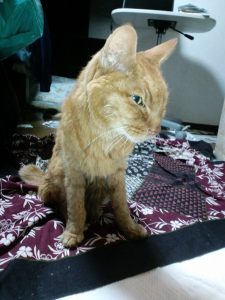
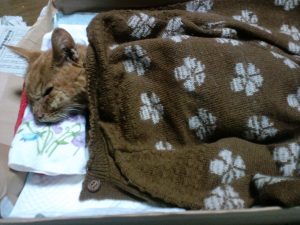
Here is the translated text:
—

Two years since symptoms appeared, and more than a year and a half since the diagnosis of suspected lymphoma.
While aggressive treatments like chemotherapy are often required, symptom improvement was achieved with steroids, Cordy, dietary therapy, and the help of other supplements. Despite weight dropping from a maximum of 7.5 kg to 2.1 kg at the end, the patient lived vigorously.
In a situation where life expectancy might have been significantly reduced, the patient’s vibrant energy surprised their family and allowed them to spend their remaining time in their own way.
May they rest in peace.
Cordy for Lymphoma Countermeasures
There are many cases where giving Cordy to a pet with lymphoma has resulted in improved or stabilized conditions without further deterioration.
Cordy’s effectiveness can typically be assessed within a short period of about a month to a month and a half.
Our research lab is investigating whether administering Cordy can modulate the immune system, maintain or improve quality of life (QOL), and potentially offer benefits against cancer.
If you have any questions, please contact us.

